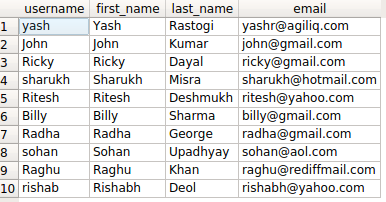11. 如何使用Django ORM找到第二大记录?¶
You would across situations when you want to find second highest user depending on their age or salary.
Though the ORM gives the flexibility of finding first(), last() item from the queryset but not nth item. You can do it using the slice operator.

我们可以使用切片运算符从查询中找到第N条记录。
>>> user = User.objects.order_by('-last_login')[1] // Second Highest record w.r.t 'last_login'
>>> user.first_name
'Raghu'
>>> user = User.objects.order_by('-last_login')[2] // Third Highest record w.r.t 'last_login'
>>> user.first_name
'Sohan'
User.objects.order_by('-last_login')[2] only pulls up the required object from db using LIMIT ... OFFSET. 如果你看一下生成的sql,你会看到类似的东西。
SELECT "auth_user"."id",
"auth_user"."password",
"auth_user"."last_login",
"auth_user"."is_superuser",
"auth_user"."username",
"auth_user"."first_name",
"auth_user"."last_name",
"auth_user"."email",
"auth_user"."is_staff",
"auth_user"."is_active",
"auth_user"."date_joined"
FROM "auth_user"
ORDER BY "auth_user"."last_login" DESC
LIMIT 1
OFFSET 2